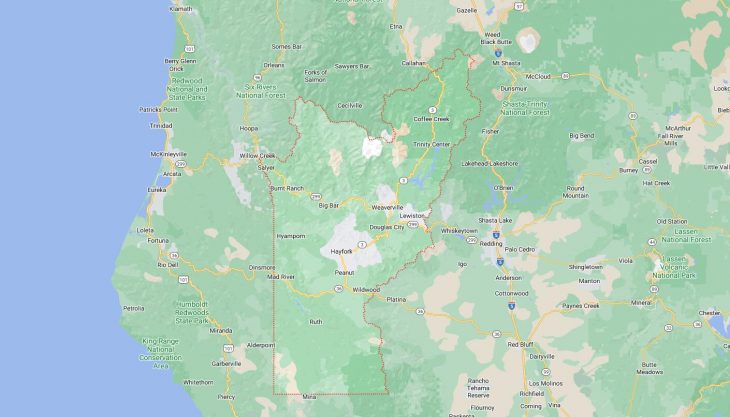Cities and Towns in Trinity County, California
Founded in 1850, Trinity County is one of 58 counties in the state of California. The city of Weaverville is the county seat. With FIPS code of 105, Trinity County has a population of 16,060 and area of 3,179 square miles (8,234 km²).
List of all cities in Trinity County, CA alphabetically
| City/Town | Postal Code | Area Code |
| Big Bar, CA | 96010 | 530 |
| Burnt Ranch, CA | 95527 | 530 |
| Douglas City, CA | 96024 | 530 |
| Hayfork, CA | 96041 | 530 |
| Helena, CA | 96048 | 530 |
| Hyampom, CA | 96046 | 530 |
| Junction City, CA | 96048 | 530 |
| Lewiston, CA | 96052 | 530 |
| Mad River, CA | 95552 | 707 |
| Peanut, CA | 96041 | 530 |
| Salyer, CA | 95563 | 530 |
| Trinity Center, CA | 96091 | 530 |
| Weaverville, CA | 96093 | 530 |
| Zenia, CA | 95595 | 707 |














































